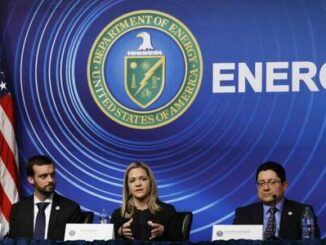
Banks have a long, long way to go on climate change.That’s the takeaway from a BloombergNEF report that looks at the level of financing that banks are pouring into the energy transition. According to BNEF researchers, the ratio of clean-energy lending and equity underwriting relative to fossil fuels needs to hit 4 to 1 by the end of the decade if the planet is to avoid the worst ravages of climate change as laid out in the Paris Agreement of 2015.
That ratio was roughly 0.8 to 1 at the end of 2021, according to the report.
“Like the real economy, and inextricably linked to it, bank financing is a tanker which needs to turn,” said William Young, director of strategic partnerships at BNEF and one of the report’s authors.
JPMorgan Chase & Co., the world’s largest underwriter of energy deals, had an energy-supply banking ratio of 0.7 in 2021. That’s slightly worse than Citigroup Inc. and Bank of America Corp., but better than Wells Fargo & Co.’s 0.4. BNP Paribas SA had the highest ESBR of the 10 largest banks, at 1.7.
“By relating climate scenarios with capital investment in the real economy to the fundamental financial plumbing of our modern economy, we are able to examine bank financing as an indicator of progress,” Young said.
The BNEF report shows that the headway made to date isn’t enough for the planet to reach the crucial goal of net-zero emissions by mid-century. Since the clinching of the Paris Agreement at the very end of 2015, about $4.6 trillion of bonds and loans have been committed to businesses focused on hydrocarbons, roughly double the $2.3 trillion arranged for renewable projects and other climate-friendly ventures, according to data compiled by Bloomberg.
Banks have faced considerable criticism for their support of the fossil-fuel industry, which is the primary source of planet-warming pollution. The industry has countered that it wants to assist the transition to a low-carbon economy by staying engaged with oil, gas and even coal clients. That transition is happening at a dangerously slow pace.
“We can still limit global warming to 1.5°C, but banks will fail us unless they fundamentally review their lending and underwriting practices,” said Lucie Pinson, founder and director of the environmental nonprofit Reclaim Finance.
The BNEF data provide a clear yardstick by which to measure progress, even as much of the finance industry’s contribution to greenhouse-gas emissions has yet to be calculated. For example, hardly any major banks and asset managers provide estimates for the emissions of their stock and bond underwriting. That may soon change, though.
The Partnership for Carbon Accounting Financials, whose members include Morgan Stanley and BlackRock Inc., said last week that it’s close to publishing standards that mean the industry will soon no longer be able to ignore the carbon footprint of its capital-markets activities.
For its study, BNEF examined the loans, bonds, equity and project finance that were underwritten for the energy sector and other relevant issuers. BNEF then applied what it calls an adjustment factor to each of the more than 2,895 issuing companies to measure the amount of funding raised for low-carbon energy relative to fossil fuels by 1,142 financial institutions.
The analysis found that bank financing for energy supply totaled $1.9 trillion in 2021, with $842 billion going to low-carbon energy projects and companies and $1.04 trillion for fossil fuels. From these figures, BNEF came up with an energy-supply banking ratio of 0.81 for the industry.
Just one of the world’s biggest banks has an ESBR of more than 4.0. NatWest Group Plc’s ratio of clean-energy financing relative to hydrocarbons was 5.5 in 2021. Of the largest banks, China Everbright Group had the lowest ESBR, at 0.3.



